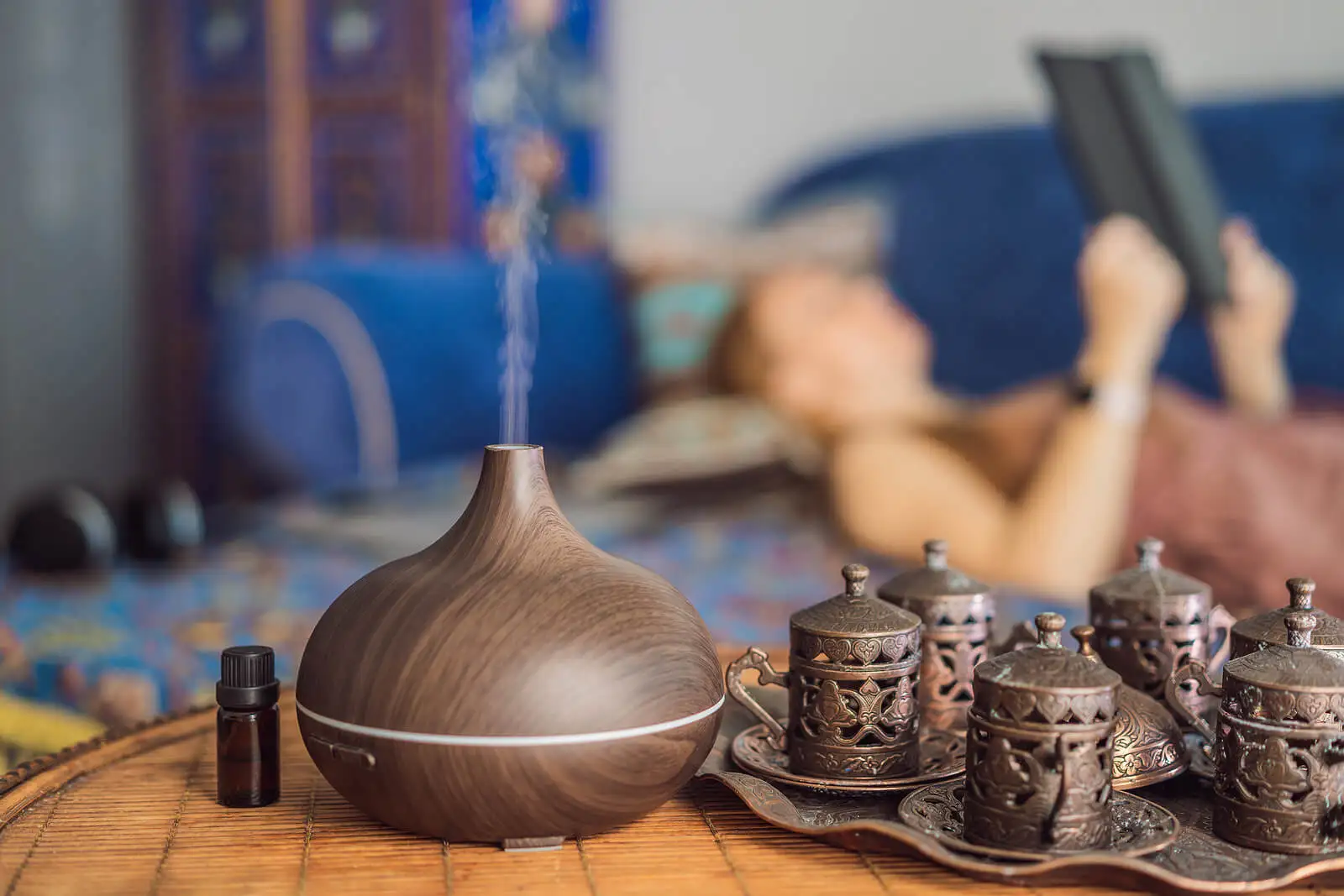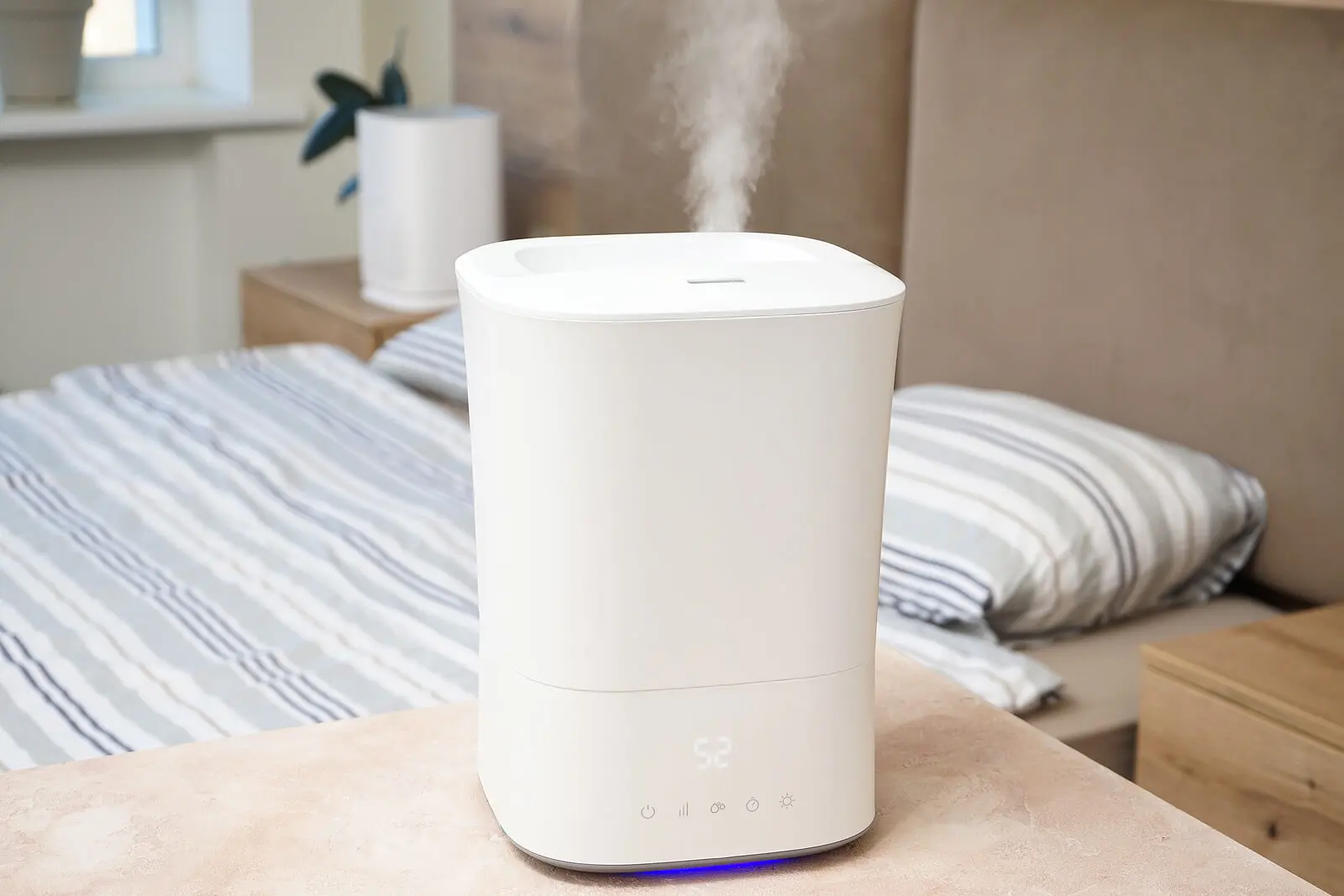Vaporizers and Humidifiers: What Are Their Differences?

Knowing the differences between a vaporizer and a humidifier is essential to choose the one that provides adequate humidity for your environment. In fact, doctors recommend both devices, as they help alleviate the symptoms of the common cold and flu.
Humidity levels below 30% are linked to symptoms such as dry skin, nosebleeds, static electricity, and respiratory discomfort. So, it’s useful to know how these devices help and which option to choose according to your needs. Let’s take a look
What are vaporizers and humidifiers used for?
An editorial published by the University of Colima explains humidity in the atmosphere as water vapor dissolved in the air. It’s not something you can see, but you can feel and sometimes even smell it indirectly through the fungi that live in it.
Regulating humidity levels is necessary, especially if you live with children, the elderly, and immunocompromised patients, as they are more vulnerable to infections and disorders associated with very humid environments.
Humidifiers and vaporizers add the necessary humidity to the air. In the case of humidifiers, they’re indicated as part of treatments to bring moisture into the respiratory tract and eliminate dryness in rooms. Medical reviews associate them with the dissolution of mucus, for example.
Vaporizers, on the other hand, give off a vapor that cools before being expelled by the machine. They are useful in cases of asthma, flu, allergies, and for a dry throat.
Some of these devices purify the environment as they expel steam.

We think you may also enjoy reading this article: 31 Recommendations to Prevent Allergies in Your Home
The differences between a vaporizer and a humidifier
In general, it may seem that there are no differences between a vaporizer and a humidifier. However, the reality is that both instruments have specifications that are worth reviewing.
Operation
Humidifiers work cold, i.e., they use a filtered wick that absorbs water and then ventilates a mist that oscillates between cool and warm.
Some have automatic mechanisms that are activated when they detect how dry the environment is. Depending on the model, they can emit ultrasonic vibrations to disperse microscopic water particles.
Vaporizers, on the other hand, boil water in order to expand a vapor that cools just before leaving the device, entering the air, and reaching the body.
Contaminant risk
Mold and mineral deposits that could come out with the cool vapor are weak points when it comes to humidifiers. In fact, a systematic review published by Medicina Intensiva highlights that the handling of these elements without complying with the correct aseptic measures increases the risk of contamination.
Considering that the possible inhalation of contaminated particles damages the respiratory tract, the exclusive use of distilled or purified water and the rigorous cleaning of the humidifier are suggested.
With vaporizers, on the other hand, there are fewer threats, since they don’t expel as many contaminants thanks to boiled water.
Safety
In the case of children, doctors consider humidifiers safer because they do not heat. Therefore, they eliminate the danger of burns. Meanwhile, vaporizers require more care, since hot water can lead to accidents.
Figures released by the United Nations Children’s Fund (UNICEF) point out that 90% of burns in children are due to domestic accidents; 60% of these correspond to heated liquids.
That said, if there are children at home, be vigilant to prevent them from touching or turning the appliance. Also, don’t leave the vaporizer running when they sleep. You should also always place it on the floor out of the way of walking paths.
The water they use
Humidifiers operate with distilled water. Since they don’t heat, it’s important to maintain strict hygiene to prevent the proliferation of fungi and bacteria.
You can use tap water in the vaporizers because they boil up to 100 degrees, which is enough to get rid of germs. In addition, they allow for the incorporation of essential oils and prescribed medicines as nebulizers.
Cleaning
The accumulation of minerals and microorganisms is of concern with both utensils. To clean them, it’s advisable to follow the manufacturer’s instructions. However, it’s advisable to apply certain tips if you want a thorough cleaning.
Humidifiers should be emptied daily, the tank is disassembled and washed before refilling. Deep cleaning is ideal every week. To do this, add 3 inches of white vinegar, let it act for 15 minutes, and rinse with a neutral cleaner.
The sanitization of vaporizers is easier since it works as a heater and shortens the risk of accumulating germs. Empty it, disassemble it and wash it with mild soap and water.
An additional recipe for cleaning suggests washing the tanks with a 10% bleach mixture, pouring 9 parts water to 1 part bleach.
Influence on allergies
Excessive indoor humidity tends to intensify the symptoms of allergy sufferers. Aside from dust mites, molds thrive in environments where humidity levels exceed 50%; this is measured with a hygrometer.
According to the American Academy of Allergy, Asthma, and Immunology, we all breathe in mold spores circulating in the air, but only some people with long-term exposure to these fungi manifest asthma reactions or symptoms.
Unlike humidifiers, hot water from vaporizers reduces indoor allergy disorders. However, when you suffer from these conditions, it’s best to seek advice from your allergist or immunologist regarding the use of the device at home.

Like this article? You may also like to read: The Advantages of Having a Dehumidifier at Home
How to choose the right option
First of all, consider whether the device is for use by a child, so you can select the safest one for him/her. Check that it has a clear instruction manual, so you know how to regulate humidity and how to prevent allergies indoors.
Another aspect has to do with budget, which depends on the brand and functions. An extra tip is to find out if the machine has the capacity for the space you want to work with. You can determine this with the device’s coverage specifications, which are usually expressed in square feet.
All cited sources were thoroughly reviewed by our team to ensure their quality, reliability, currency, and validity. The bibliography of this article was considered reliable and of academic or scientific accuracy.
- Humidifiers and Vaporizers. (n.d.). Asthma Canada. Available in https://asthma.ca/wp-content/uploads/2017/08/asthma_humidifiers_vaporizers2_eng.pdf
- 90 de cada 100 lesiones por quemaduras en niñas y niños suceden en casa. UNICEF. Costa Rica; 2021. https://www.unicef.org/costarica/comunicados-prensa/90-de-cada-100-lesiones-por-quemaduras-en-ninas-y-ninos-suceden-en-casa
- Alergia al moho. Academia Estadounidense de Alergia, Asma e Inmunología. Estados Unidos. https://www.aaaai.org/conditions-treatments/afecciones-y-tratamientos/alergias/alergia-al-moho
- de la Fuente-Sancho, I., Romeu-Bordas, Ó., Fernández-Aedo, I., Vallejo De la Hoz, G., & Ballesteros-Peña, S. (2019). Contaminación microbiológica en humidificadores de sistemas de oxigenoterapia de alto y bajo flujo: una revisión sistemática. Medicina Intensiva, 43(1), 18–25. https://doi.org/10.1016/j.medin.2017.11.003
- Humidificadores: alivio para la piel y los síntomas respiratorios. Clínica Mayo. Estados Unidos; 2021. https://www.mayoclinic.org/es-es/diseases-conditions/common-cold/in-depth/humidifiers/art-20048021
- Humidificadores y la salud. Medline Plus. Biblioteca Nacional de Medicina. Estados Unidos; 2020. https://medlineplus.gov/spanish/ency/article/002104.htm
- Tejeda Martínez A. [Con la colaboración de Méndez Pérez I, Rodríguez N, Tejeda Zacarías E]. La humedad en la atmósfera. Bases físicas, instrumentos y aplicaciones. Universidad de Colima. México; 2018. http://ww.ucol.mx/content/publicacionesenlinea/adjuntos/La-humedad-en-la-atmosfera_466.pdf
- Seguridad doméstica: Prevención de quemaduras, descargas eléctricas e incendios. Nemours Children’s Health. Estados Unidos. https://kidshealth.org/es/parents/safety-burns.html
This text is provided for informational purposes only and does not replace consultation with a professional. If in doubt, consult your specialist.








